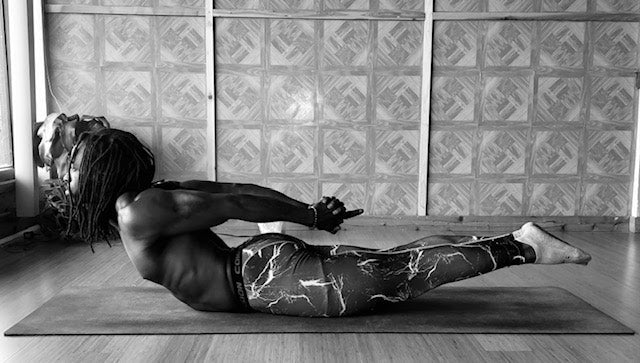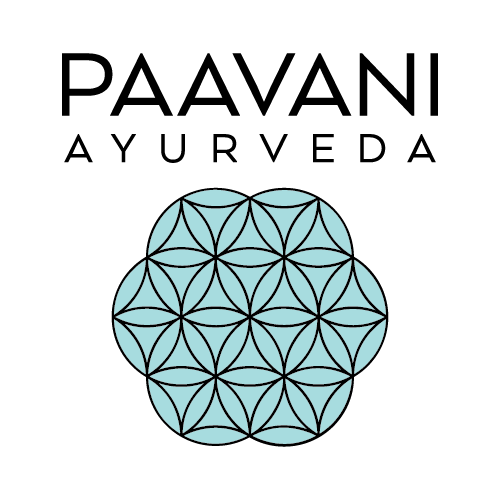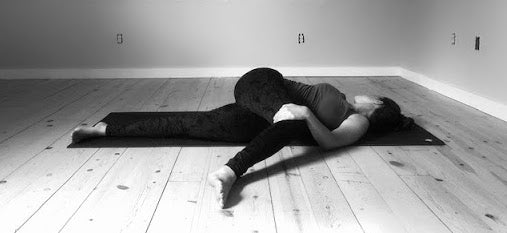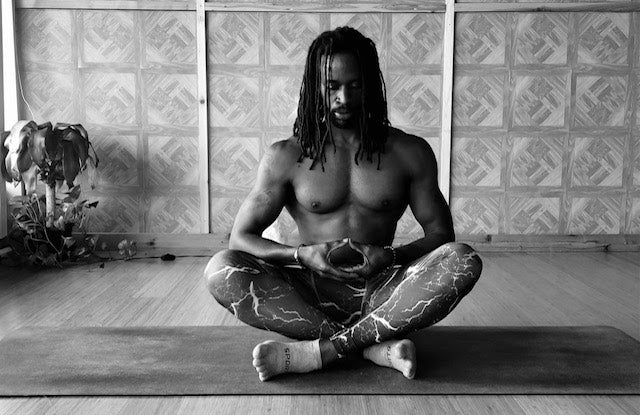
Salabhasana: An Ayurvedic Guide to Locust Pose

Salabhasana, also known as Locust or even Grasshopper pose, is a back bending yoga posture done in the prone position. It is an incredibly beneficial and safe way to strengthen the back and buttocks, tone the thighs, stretch the ankles and tops of your feet, open your heart, improve digestion and increase shoulder flexibility. This posture melts away stress and brings your focus back to the present moment.
This posture is beneficial for the 3 doshas:
Vata- Since Salabhasana directs energy to the navel center, it balances samana vayu (a subdosha of vata) which is necessary for healthy digestion. Since it improves circulation and movement within the digestive tract, this posture ultimately can help aid in daily elimination (bowel movement). Locust pose also warms the body and can relieve stiffness and back pain.
Pitta- This prone back bending posture releases excess pitta (heat) stored in the solar plexus (navel center). Expelling heat from this center will help soothe fiery emotions that are not serving your divine purpose as well as restore balance to your digestive system.
Kapha- If you are working to balance kapha, Locust pose is an excellent way to lighten the heavy and sometimes lethargic energy associated with kapha dosha. This posture is warming, revitalizing and it also can help to dispel mucus and congestion in the respiratory tract.
How to Do Salabhasana:
- Lay down on your yoga mat, belly down.
- Lower your forehead to the mat.
- If you are able, interlace your fingers behind your back. If that is not accessible, simply draw your arms and hands toward the midline of your back.
- Once you have placed your arms into position, you should feel the shoulders and chest lift up and away from the floor.
- Squeeze the shoulder blades together and continue taking full body breaths.
- Take a strong inhale and, simultaneously, lift your head, chest, legs and feet up and away from the floor. Keep breathing!
- Your drishti (gaze) can be slightly upward or forward and keep the back of the neck long.
- Continue to draw the legs toward the midline of your body.
- If possible, with each inhale, lift up a little bit higher to deepen and strengthen.
- To come out of the posture, exhale and release your hands, lower your body down completely and bring your cheek to one side and take rest.
- Repeat this sequence 3-5 more times.
Precautions:
- It is best to learn any Yoga posture, including Salabhasana, under the supervision of a Yoga teacher. This way, the teacher can help correct alignment which will decrease the chances of you developing faulty or harmful habits in your Yoga practice.
- Please consult a physician before you begin any exercise practice, including Yoga.
Contraindications for Salabhasana:
- heart problems
- knee or hip injury
- spine or neck injury
- headache or migraines





Leave a comment
This site is protected by hCaptcha and the hCaptcha Privacy Policy and Terms of Service apply.